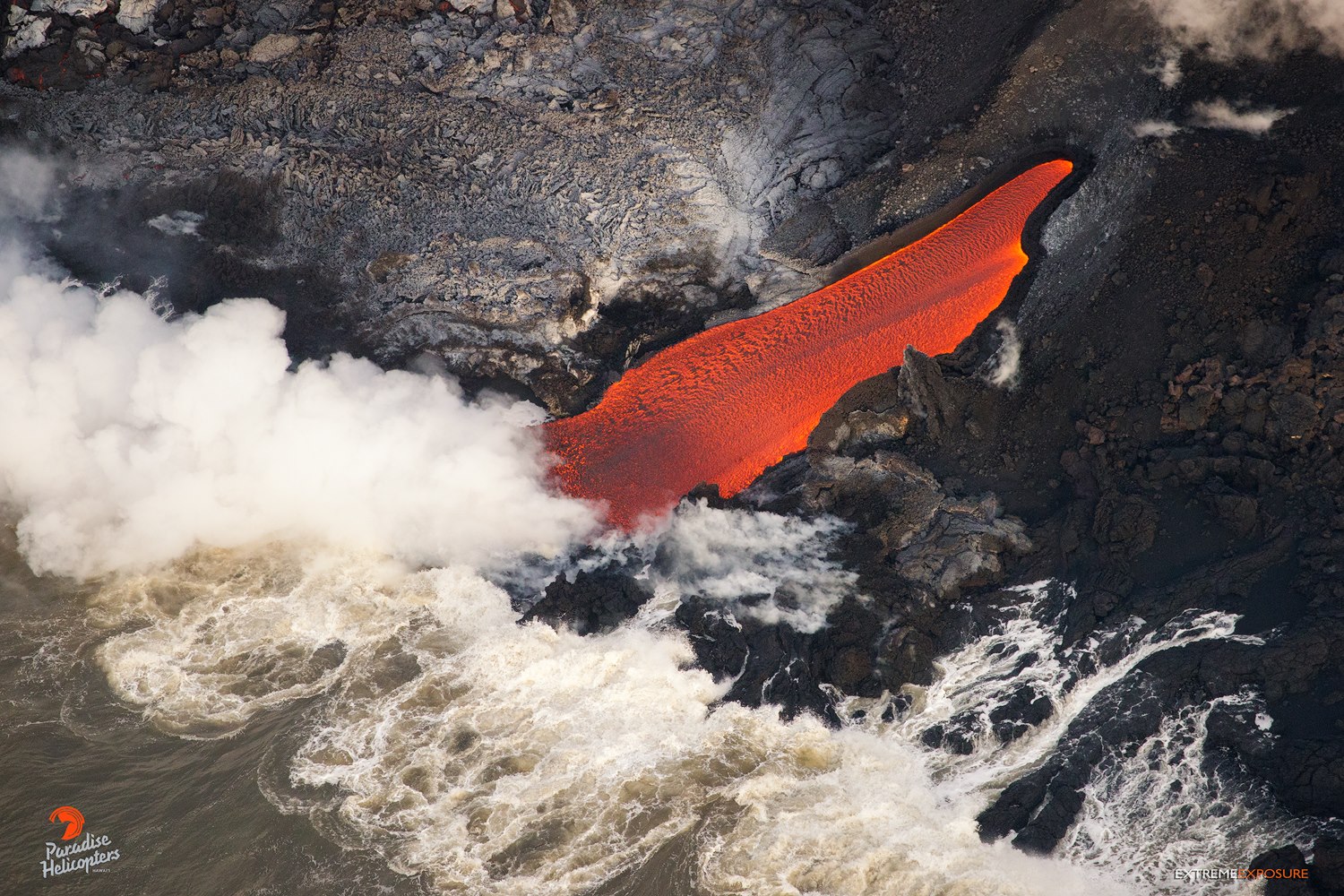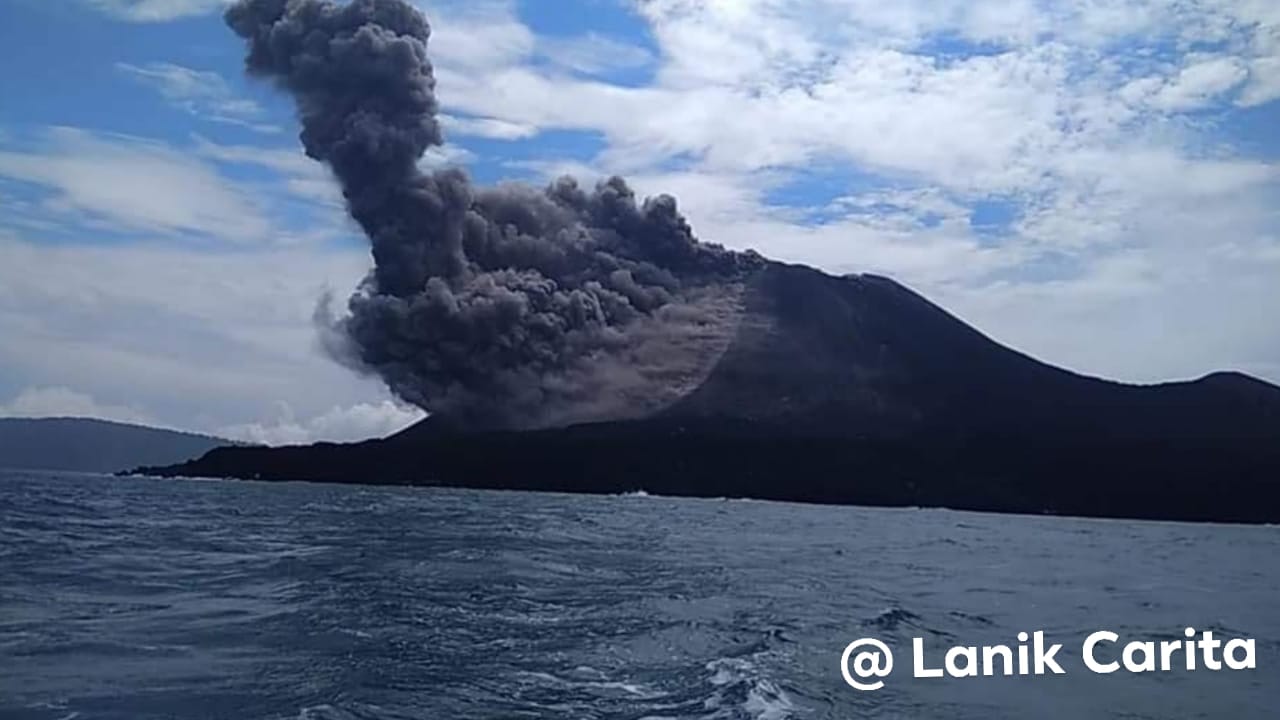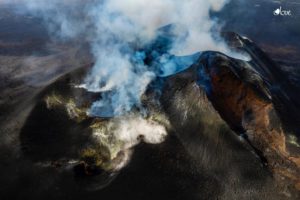June 23 , 2018.
Krakatau , Indonesia :
Increased activity of G. Anak Krakatau, Lampung
June 23, 2018
In general, the daily activity of G. Anak Krakatau is visually often covered by fog. When the weather is sunny, we observe the main fumes from the crater with a height of 25 to 100 meters above the peak, low pressure , white, with low to moderate intensity. Seismicity is dominated by shallow volcanic earthquakes (VB) and deep volcanic earthquakes (VA). In addition, emission earthquakes, local tectonic (TL) and far tectonic (TJ) seismic events were recorded.
On June 18, 2018, in addition to the volcanic and tectonic earthquakes, a continuous tremor with an amplitude of 1 to 21 mm (dominant 6 mm) was also recorded. On June 19, 2018, seismicity increased from an average of 1 incident per day to 69 incidents per day. In addition, he also recorded low frequency earthquakes, with 12 events per day. As of 21 June 2018, 49 earthquakes, 8 low-frequency earthquakes, 50 shallow earthquakes and 4 volcanic earthquakes have been recorded.
Conclusion:
• Since June 18, 2018, Anak Krakatau has increased its activity. So far, the level of activity is still on the status of Waspada (level II), with the recommendation for communities / tourists not to approach the crater within a radius of 1 km.
• In preparation for an eruption, since 18 June 2018, he has been coordinated and informed by BPBD Prov. Banten, BPBD Prov. Lampung and BKSDA Lampung to increase vigilance and not get closer to the island of Anak Krakatau.
Source : PVMBG
Photo : Lanik Carita
Kilauea / Pu’u ‘Ō’ō , Hawai :
Friday, June 22, 2018, 8:45 AM HST (Friday, June 22, 2018, 18:45 UTC)
19°25’16 » N 155°17’13 » W,
Summit Elevation 4091 ft (1247 m)
Current Volcano Alert Level: WARNING
Current Aviation Color Code: RED
Kīlauea Volcano Lower East Rift Zone
The eruption in the lower East Rift Zone (LERZ) continues with little change.
Lava fountains from the Fissure 8 spatter cone continue to flow in the established channel to the Kapoho coastline. A dominant ocean entry on the south edge of the flow front is producing a large laze plume. Upslope, minor overflows from the channel occur periodically, but are short-lived and do not extend beyond the current flow field. Fissure 6 is no longer active. Fissures 16 displayed incandescence and weak lava fountain was observed at Fissure 22 by this morning’s overflight crew.
https://www.facebook.com/ikaika.marzo/videos/1850568094995718/
Pele’s hair and other lightweight volcanic glass fragments from the lava fountain at Fissure 8 continue to fall downwind of the fissure, dusting the ground within a few hundred meters (yards) of the vent. High winds may waft lighter particles to greater distances. Residents are urged to minimize exposure to these volcanic particles, which can cause skin and eye irritation similar to volcanic ash.
HVO field crews are on site tracking the fountains, lava flows, and spattering from Fissure 8 as conditions allow and are reporting information to Hawaii County Civil Defense. Observations are also collected on a daily basis from cracks in the area of Highway 130; no changes in temperature, crack width, or gas emissions have been noted for several days.
Volcanic gas emissions remain very high from Fissure 8 eruptions. Trade wind conditions are expected to bring VOG to the southern and western parts of the Island of Hawaii.
The ocean entry is a hazardous area. Venturing too close to an ocean entry on land or the ocean exposes you to flying debris from sudden explosive interaction between lava and water. Also, the lava delta is unstable because it is built on unconsolidated lava fragments and sand. This loose material can easily be eroded away by surf, causing the new land to become unsupported and slide into the sea. Additionally, the interaction of lava with the ocean creates « laze », a corrosive seawater plume laden with hydrochloric acid and fine volcanic particles that can irritate the skin, eyes, and lungs.
Magma continues to be supplied to the Lower East Rift Zone. Seismicity remains relatively low in the area with numerous small magnitude earthquakes and low amplitude background tremor. Higher amplitude tremor is occasionally being recorded on seismic stations close to the ocean entry.
Additional ground cracking and outbreaks of lava in the area of the active fissures are possible. Residents downslope of the region of fissures should heed all Hawaii County Civil Defense messages and warnings.
Kīlauea Volcano Summit
Seismicity remained elevated overnight at the summit of Kīlauea Volcano, reaching over 40 earthquakes per hour at one point. Inward slumping of the rim and walls of Halemaʻumaʻu continues in response to ongoing subsidence at the summit.
Sulfur dioxide emissions from the volcano’s summit have dropped to levels that are about half those measured prior to the onset of the current episode of eruptive activity. This gas and minor amounts of ash are being transported downwind, with small bursts of ash and gas accompanying intermittent explosive activity.
Source : HVO
Shinmoedake , Japan :
Mt. Shimmoedake, in southwestern Japan, was erupted again on Friday after a similar eruption on April 5, the Japanese Meteorological Agency said.
The 1421-meter mountain that straddles the prefectures of Kagoshima and Miyazaki at 9:09, emitted ashes and fumes up to 2,600 meters in the air and with large volcanic rocks up to 1.1 kilometers from the crater, said the agency.
https://www.facebook.com/turisukisan/videos/857824637737264/
Local authorities have stated that no case of injury or damage has been reported so far. The eruption did not affect flights to and from Miyazaki and Kagoshima airports.
The meteorological agency has maintained a level 3 alert on a scale of 5 that limits access to the volcano. He also warned rocks projected in areas within 3 kilometers of the crater and pyroclastic flows within a radius of 2 km.
The mountain has remained volcanically active, especially since the eruption of March 6, the first explosive eruption in seven years. More than 100 volcanic earthquakes were recorded between Sunday and Tuesday.
The volcano is among about fifty volcanoes around Japan constantly monitored.
Source : kyodonews






